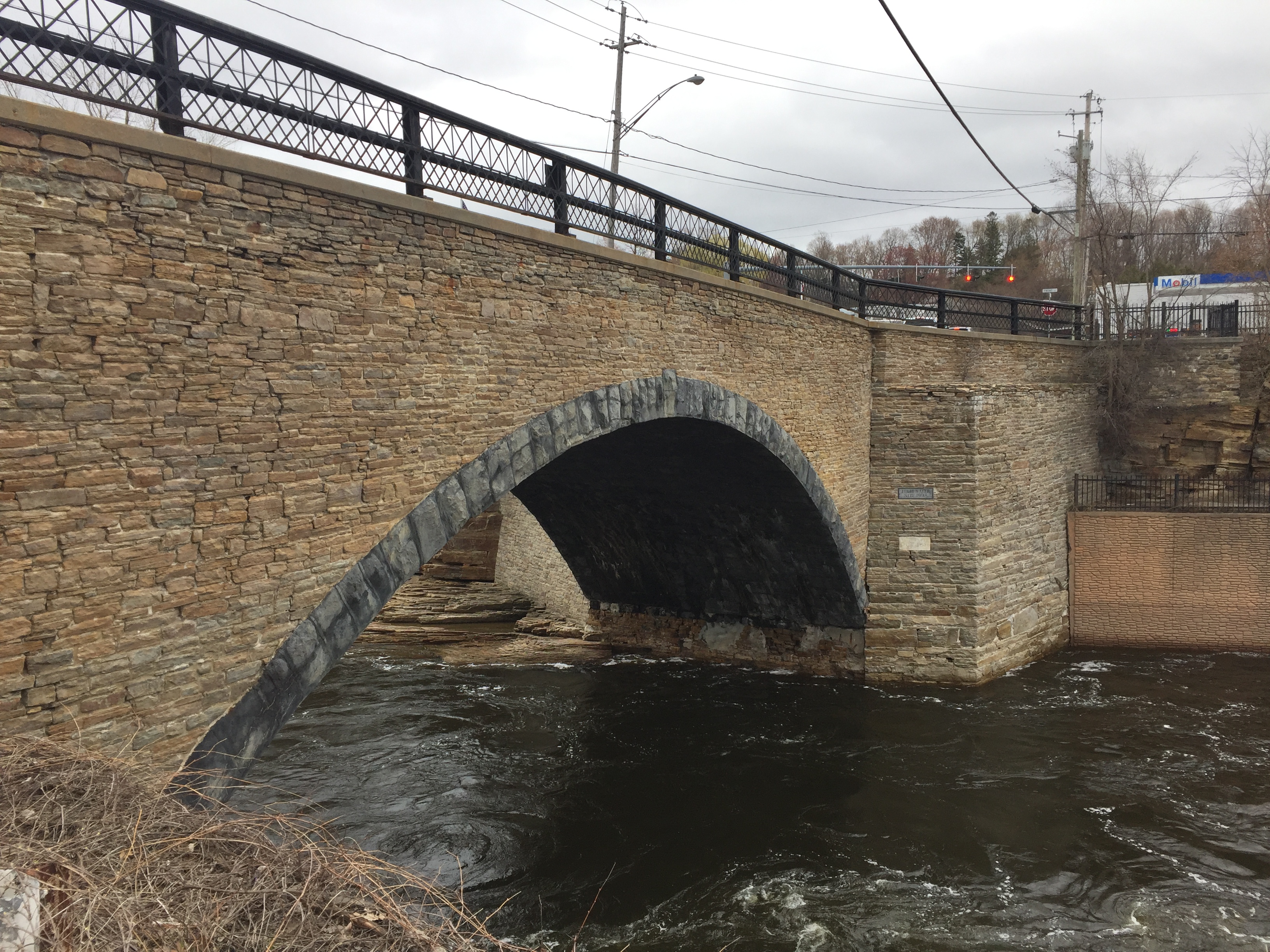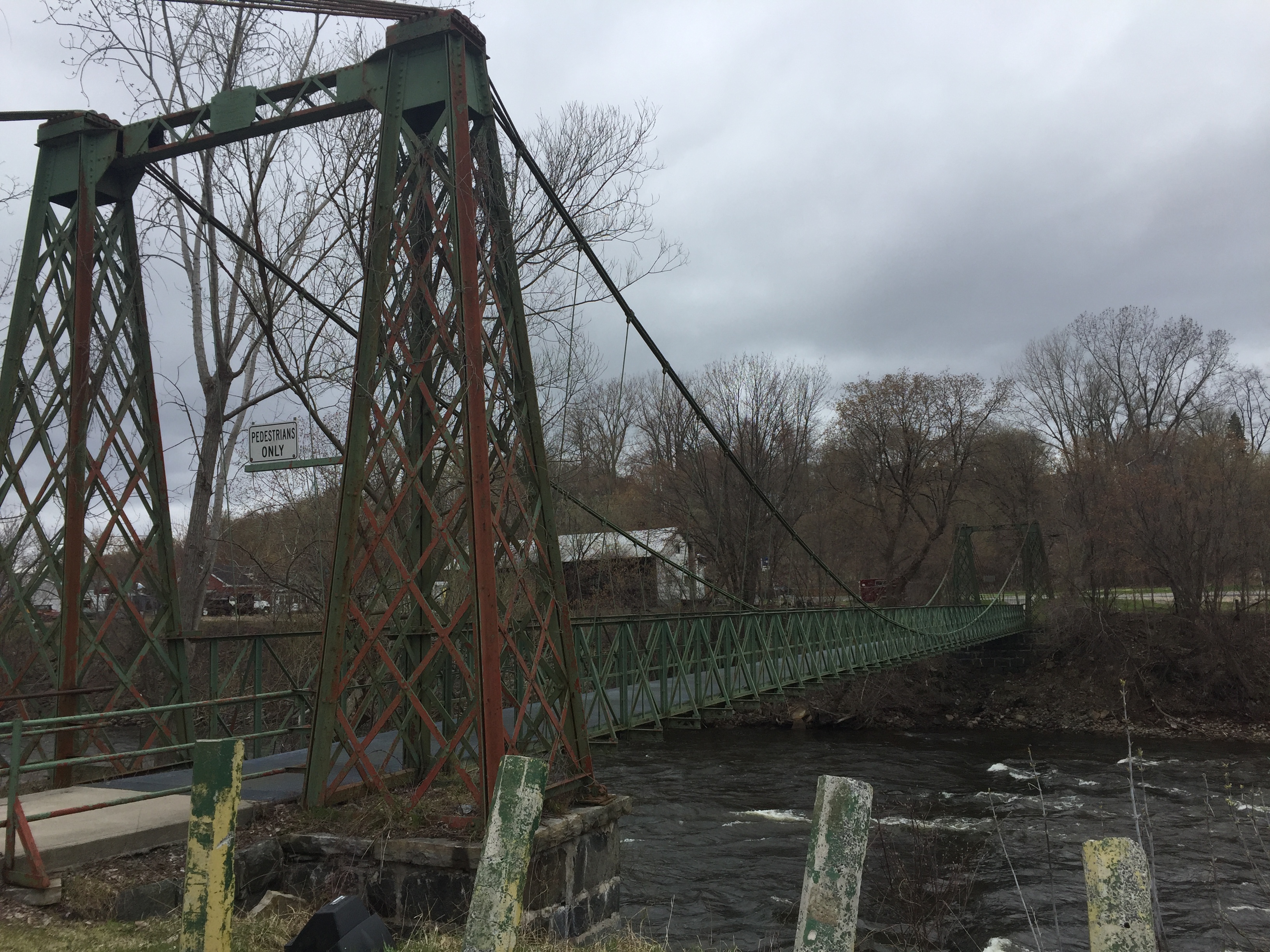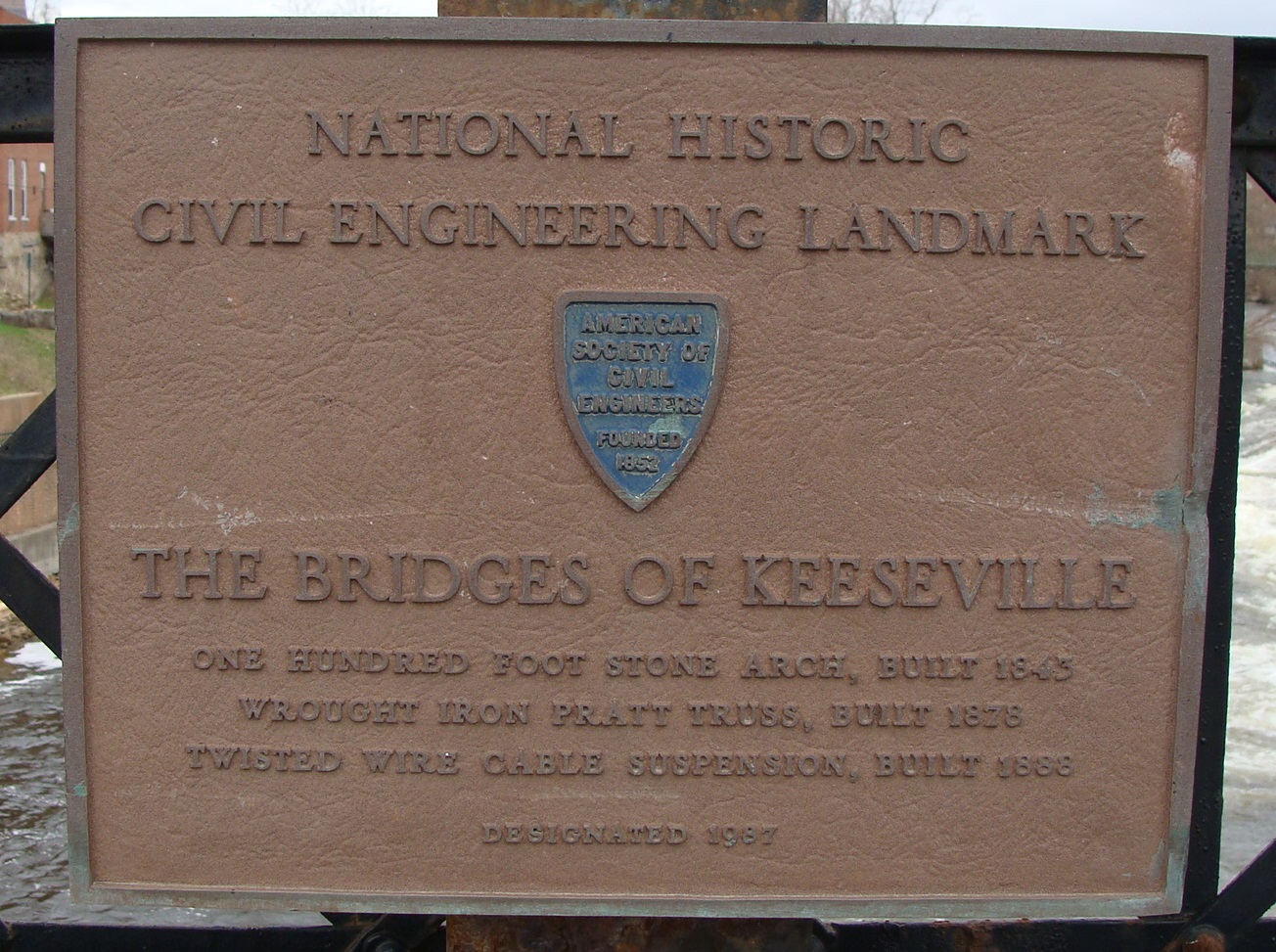Bridges of Keeseville
44 30 13.2 N, 73 28 57.3 W

The Bridges of Keeseville, three remarkable operational 19th century bridges of different types, are all within 500 yards of each other. The evolution of civil engineering materials, analysis, and design, is clearly illustrated by these structures, all of which remain in service.
A 214-foot single-span covered wooden bridge, built above the cribs of stone in the AuSable River that served to break log jams and ice floes, collapsed during the winter of 1875 under the weight of a three-foot snowfall and high winds. The "Upper Bridge" (pictured) was built in its place.
Three bridges were built over the AuSable River in Keeseville, within a half-mile of each other. Each represents a distinctly different engineered solution. One bridge is constructed of stone masonry in compression, one wrought iron in tension and compression, and one of steel in tension. Each bridge was tailored to its anticipated loads and the constraints of its site, and each reflects the materials and design technology of its period.
In an era known for "monumental" structures such as the Brooklyn Bridge, the bridges of Keeseville symbolize a different—though equally important—facet of 19th-century bridge-building practice.

The hundreds of thousands of smaller railroad, highway, and pedestrian bridges of the period reflect a more vernacular tradition, and were built by engineers and entrepreneurs unknown to most of us. Yet it was these little bridges that replaced the ford and ferry and that made transportation feasible for the vast segment of the population.
Facts
- By the early 1800s, Keeseville had become a bustling town rich in timber and iron ore resources. Several forges, manufacturing facilities, and mills obtained their power from AuSable River, which ran through town.
- The 'Keystone Arch Bridge' has carried traffic continuously since its construction in 1843 and is one of the oldest such bridges in the U.S. Built by master mason Soloman Townsend, the bridge spanned 110 feet across the fast-flowing river.
- A heavy rain and flooding in the spring of 1842 created turbulence in the river and undermined the project. The stone of the partially completed arch, the falsework, and the rubble fill all tumbled into the river with a roar, shock, and tremor that was reported to have been felt as far away as Lake Champlain, five miles away. But Townsend persevered and the bridge was completed in 1843.
- In the 1830's a suspension footbridge, hung on forged chains, was built across the AuSable to serve the mill hands. On September 13, 1842, militiamen accompanied by admiring citizens and small boys started marching across the bridge when one of the chain links broke, dumping 40 people into the river. Thirteen persons lost their lives. Despite this tragedy, additional suspended pedestrian bridges continued to serve Keeseville.
- The "Swing Bridge," built in 1888, was one of a small number of suspension foot bridges built by the Berlin Iron Bridge Company of East Berlin, Connecticut, a firm known primarily for another bridge style, its patented lenticular truss. They furnished the labor, the lattice-braced steel towers, the five-strand steel wire cables, suspenders, and the floor system for a contract price of $3500.
- A long (214 feet) single-span covered wooden bridge, built above the cribs of stone in the AuSable River that served to break log jams and ice floes, collapsed during the winter of 1875 under the weight of a three-foot snowfall and high winds. The "Upper Bridge" was built in its place.
- The "Upper Bridge", a pin-connected Pratt truss completed in 1878 by the Murray, Dougal & Company. Richly ornamented in the style of the period, is an excellent example of the "catalogue bridge" which was marketed in the U.S by several hundred bridge companies from about 1875 to 1910. The bridge was built for $3500. Bridges built by Murray, Dougal & Company were never plentiful and today they are rare.


